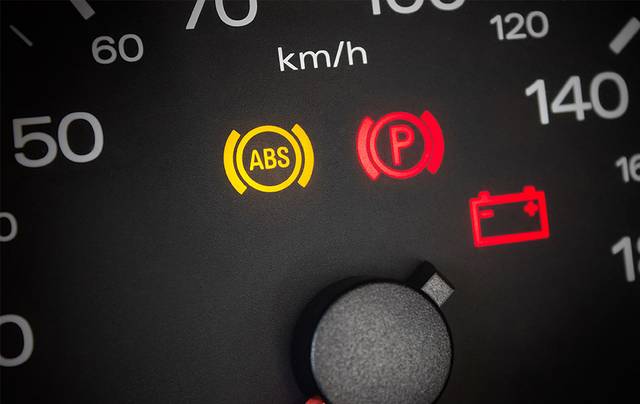Need an ABS Warning Light Inspection?
Get roadside assistance or find specialists near you.

Australia's #1 booking site for car services & car repairs
Book now, pay later Interest-free payments
Transparent prices no surprises

*Available at select service providers. T&Cs apply.
Average rating for ABS warning light inspection
4.7 • based on 32 reviews of 31 businesses
ABS Warning Light Inspection
Can I keep driving with the ABS warning light on?
You're cruising along and notice a light on in your dash. It’s the ABS warning light.
What do you do? Keep driving or not?
If the ABS light is illuminated on its own then yes, you can keep driving as your brakes will still be working.
However, if you do continue to drive, make sure to arrange an inspection swiftly and be aware that your ABS may not work in the event of emergency braking.
If you are in this situation and need an ABS inspection performed by a qualified technician, it could cost you around $30 to $160 depending on how long it takes to identify the fault.
Note that if both the ABS and brake warning lights are illuminated, it is potentially a dangerous situation.
Stop the car and get AutoGuru to arrange a technician to inspect the brakes as soon as possible.
How does the ABS work?
ABS stands for Anti-Lock Braking System.
The function of the ABS is to stop the wheels of a vehicle from locking up during braking and still allow for controlled steering of the vehicle.
When your brakes lock up, it stops the wheels from rotating.
However, a vehicle is heavy and may not stop instantly stop and may start to slide uncontrollably.
The ABS uses wheel speed sensors to identify when your wheels have stopped but the vehicle is still in motion.
The sensor will send a message to the ABS module that identifies when the vehicle is sliding, and will automatically activate the ABS.
A driver under emergency braking will feel pressure and a pulsating sensation coming through the brake pedal when the ABS is actively operating.
The ABS will repetitively release and apply brake fluid pressure to the brakes, similar to if you were to quickly pump the brakes manually.
This allows the wheels to continue to rotate while keeping traction.
In this situation, the driver should keep applying the brakes and let the ABS do its magic.
Common reasons for the ABS to fail
- There may be a loss of pressure in the brake hydraulic system
- There’s a brake fluid leak, or the brake fluid may be low
- Too much air in the brake system
- A damaged or faulty hydraulic pump or valve
- The ABS module or ECU may be faulty
- Brake system wiring could be corroded or damaged
- Wheel speed sensor may be faulty, disconnected or damaged

How is the ABS Warning Light inspection performed?
A technician will check fuses and connect a computer to the vehicle that will scan the ABS system for faults.
If nothing obvious shows up, the technician may need to do a thorough inspection of the complete brake system to determine the cause of the ABS warning light.
How important is an ABS Warning Light Inspection?
Which function on your vehicle is the most important to you?
After you consider all the aesthetically pleasing things, your thoughts may come to a stop at the brakes.
They are pretty important - can you imagine the chaos without them?
We put all our trust in brakes, without a second thought.
Our precious cargo’s safety solely relies on the brakes working.
Best to keep them in tip-top shape